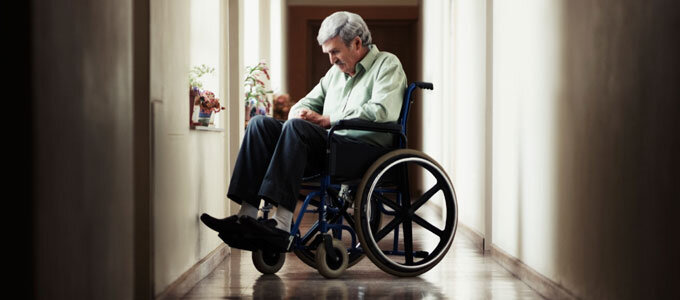
As seniors become older, the risk of certain injuries due to common falls will increase. To reduce the risk of injury their family may choose to place their loved one into the care of a nursing home to have care around the clock.
However, seniors can still get injured. When these injuries stem from nursing home abuse, they may leave seniors traumatized, permanently disabled or worse. Nursing home injury is any type of physical harm that an elderly person suffers while staying at a long-term care facility. Some injuries can be single and isolated accidents. However, the nursing home staff members can ruin a resident’s health and well-being by neglecting their needs overtime or by intentionally assaulting them.
Staff members who abuse or neglect the residents, so the exact opposite of what family members entrust them to: help seniors live out their lives comfortably and with dignity. Nursing home injuries can vary greatly depending on several factors, including resident’s health care needs and how they are treated by staff members.
Bedrail- Nursing homes often use bedrails to keep residents from falling out of bed. Yet, bedrails can end up putting the residents in more danger if they malfunction. For example, residents can get stuck between the mattress and the bedrail, which can lad to breathing problems, suffocation, or cardiac arrest. In other cases, a resident may try to get out of the bed a fall. Staff members need to properly supervise residents who need bedrails to make sure that they do not get hurt.
Bedsores– Also known as pressure ulcers, bedsores may occur when a resident lies in the same spot for a long period of time, causing ski damage, necrosis (death of skin tissue and cells), and infections. Bedsores can be a significant problem for bedridden nursing home patients, especially if nursing home staff members do not properly check for then or apply proper treatments.
Broken bones- As nursing homes residents age, their bones become weaker, putting them at an increased risk for broken bones- most notably, hip and neck fractures. A broken neck can damage normal heart, lung, and breathing functions. According to the CDC, over 300,000 seniors must go to the hospital each year due to broken hips. CNN reports that 1 in 3 adults over the age of 50 who suffer a hip fracture die within a year after the injury occurred.
Infections- According to the CDC, 1-3 million infections occur every year at nursing homes or other long tr care facilities throughout the United States.
Common Infections can include:
-
Influenza
-
Pneumonia
-
Respiratory Infections
-
Skin and soft tissue infections
-
Urinary tract infections
When nursing home staff fail to properly protect residents from these illnesses, they may be found responsible if the illness leads to other health problems or death.
Falls and fractures– Falls can lead to broken bones, concussions, or spinal cord injuries. In a high-quality nursing home, staff members carefully look after residents to prevent them from falling, but this is not always the case. One example of this is, one nursing home resident in Texas fell multiple times, including into a large mud hole after wandering out of the home unsupervised. His fall would cause complications that would lead to his death. He had only been in the nursing home for one month. Another incident that occurred was, a nursing home resident fell out of his bed and died a few days later. The nursing home staff members did not immediately notify a doctor, even though the resident had previously suffered from bleeding in the brain. As a result, the nursing home had to pay a $23,000 fine.
Spinal cord injuries– these injuries prevent important signals from the brain from reaching other parts of the body. This can limit a person’s mobility. Spinal injuries among nursing home residents often stem from a fall. Common health issues that can occur from a spinal cord injury are, difficulty breathing, loss of bowel control and paralysis of one or more limbs. Spinal cord injuries can vary depending on what part of the spine gets damaged. Since the brain sends signals down the spinal column, more body parts may be affected if the injury occurs higher up on the spine.
Nursing home injuries can stem from many different causes, such as when a resident breaks a bone after falling, yet, while injuries like these can happen accidently, they can also be the result of intentional abuse or inexcusable neglect.
While nursing homes should have protocols in place to protect their residents, it may be enough to keep every senior safe. Families can take action to ensure that their loved one doe not suffer injuries while in a nursing home.
Ways to prevent nursing home injuries include:
-
Choosing a nursing home that has a good safety and professionalism record
-
Making sure the resident has the proper equipment, such as a wheelchair or walker if it is needed
-
Noting any signs of abuse and reporting it
-
Regularly visiting a nursing home resident to make sure their health needs are being met
-
Updating staff members as the resident’s health care needs change over time
State and federal laws have been enacted to keep residents safe from abuse, neglect, and injuries. If nursing facilities fails to provide care in a compassionate and professional manner and it is believed that your loved one is being harmed as a result, contact your local authorities, such as the police or Adult Protective Services. Sometimes, lawyers are required to help navigate the law when it comes to injuries sustained while in a nursing home.
Additional Resources:


